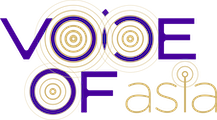
U.S. inflation exceeded expectations last month, with rising egg and energy prices being the main factors contributing to the increased cost of living for Americans.
Data shows that the inflation rate rose to 3% in January, the highest level in nearly six months, and also higher than the 2.9% previously predicted by economists. Previously, the U.S. central bank decided to maintain interest rates, stating that there was great uncertainty about the future direction of the U.S. economy. This decision reflects a cautious approach amid ongoing economic fluctuations.
The rise in the inflation rate poses a challenge to U.S. President Trump, who made controlling inflation a core part of his campaign last year. However, his proposed policies, such as raising import tariffs, are considered by economists to potentially lead to price increases. Ryan Sweet, chief U.S. economist at Oxford Economics, said the latest report may force Trump to reconsider these plans, as they would increase taxes on goods entering the United States. These considerations highlight the complexities of managing inflation through trade policies.
Sweet wrote: "Tariffs can still be used as a negotiating tool to extract some concessions from other countries. However, putting even a little upward pressure on consumer prices through tariffs is not a good sign politically for the Trump administration." This suggests a delicate balance between using tariffs for strategic advantage and mitigating their potential impact on consumers.
Price increases were widespread last month, affecting car insurance, air tickets, medicines, and other basic necessities. Grocery prices rose 0.5% month-on-month, higher than the 0.3% in December, with egg prices soaring more than 15% due to shortages caused by the bird flu outbreak. The Labor Department said this was the largest monthly increase in nearly a decade. In contrast, clothing prices fell, while rents and other housing-related costs rose 4.4% over the past year, the smallest 12-month increase since January 2022. These varied price movements reflect the complex dynamics influencing the cost of living.
Core inflation, which excludes food and energy prices and is seen by analysts as a better measure of underlying trends, rose 0.4% month-on-month, the fastest pace since March. Brian Coulton, chief economist at Fitch Ratings, said: "This is not a good number. It suggests that the Fed has not finished its job of reducing inflation, and that new inflationary risks from tariff increases and limited growth in the labor supply are beginning to emerge." This underscores the challenges the Federal Reserve faces in controlling inflation amidst new economic pressures.
The Federal Reserve began raising interest rates sharply in 2022, hoping to cool the economy by raising borrowing costs and ease the pressure that was pushing up prices. The Fed began cutting interest rates in September, saying it wanted to avoid further cooling the economy. But in recent months, signs of inflation persistently above the Fed's 2% target have prompted the Fed to hold interest rates steady in January. Federal Reserve Chairman Jerome Powell told Congress this week that the Fed is in no hurry to cut interest rates further. He noted that it remains unclear how Trump's tariff plans will affect the Fed's policy, as these measures could lead to a slowdown in the economy while prices rise.
On Wednesday, Trump called on the Federal Reserve to lower interest rates in order to "go hand in hand" with tariffs. But some analysts said after the report's release that they no longer expect any rate cuts this year. In early U.S. trading, major stock indexes opened lower, while interest rates on U.S. government debt climbed, as investors bet that borrowing costs would remain at higher levels. This market reaction reflects investor concerns about the potential impact of inflation and interest rate policies on economic growth.


















